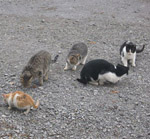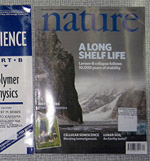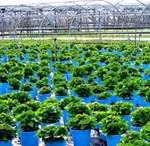Coyotes in Chicago: conflict or coexistence?
 Mammals
Mammals  Coyote (Canis latrans). Image credit, Christopher Bruno.For the people of Chicago, a new study should ease their fears somewhat about the packs of coyotes that roam their city.
Coyote (Canis latrans). Image credit, Christopher Bruno.For the people of Chicago, a new study should ease their fears somewhat about the packs of coyotes that roam their city.
The study found little evidence that coyotes in Chicago are attracted to human activities and the number of nuisance animals in the city was low. These findings should provide comfort given the recent headlines about a lethal coyote attack on a hiker in Canada.
Stanley Gehrt and his research team had surprised people in 2006 when they announced that as many as two thousand coyotes lived in Chicago from the suburban areas all the way to the urban core.
The researchers just published the results of their study in the journal Mammalogy last week. The study involved capturing coyotes in Chicago and outfitting them with radio collars to track their movements.
The researchers wanted to answer a fundamental question. Do coyotes reside in urban areas because of an attraction to human activities or in spite of them?
Animals such as raccoons and red foxes have adapted their behavior to take advantage of the urban environment. If coyotes have adopted these synanthropic tendencies it could lead to widespread conflicts with humans.
The researchers found that 37 of the 84 coyote packs (44%) had home ranges comprised almost entirely of natural areas. Surprisingly, 24 of the packs (29%) had home ranges that had little to no natural areas.
Nevertheless, the study found that coyotes consistently avoided areas associated with people and instead selected for lands with little or no development such as golf courses, cemeteries, and easements along thoroughfares. This is consistent with diet studies in the study area, which have found that coyotes eat food items associated with natural areas (e.g. geese eggs and rodents) rather than anthropogenic sources. Only a small number of nuisance cases were recorded, and they were mostly related to animals that were sick or exposed to feeding by humans.
The paradox of use and avoidance
These surprising results bring up a perplexing question: if coyotes avoid humans and live off food from natural areas rather than anthropogenic sources, than why are they seemingly thriving in urban areas. The researchers write:
"Coyotes were consistent in apparently avoiding human activities despite home ranges located in areas with nearly complete development, which created a paradox of use and avoidance of developed land-use types."
My guess is that urban development may indirectly increase food supplies for coyotes by enhancing the habitat for prey like rodents and geese. Another consideration is that urban coyotes may not be as well off as their rural counterparts in terms of fitness and abundance. The study authors write:
"Future research should further explore the limitations of urban landscapes for coyotes, including the influence on survival and reproductive rates in different parts of the urban landscape, but our results demonstrate that coyotes represent a medium-to-large carnivore capable of exploiting areas of intense development while largely managing to avoid people and conflicts."
--Reviewed by Rob Goldstein
Gehrt, S., Anchor, C., & White, L. (2009). Home Range and Landscape Use of Coyotes in a Metropolitan Landscape: Conflict or Coexistence? Journal of Mammalogy, 90 (5), 1045-1057 DOI: 10.1644/08-MAMM-A-277.1




Reader Comments